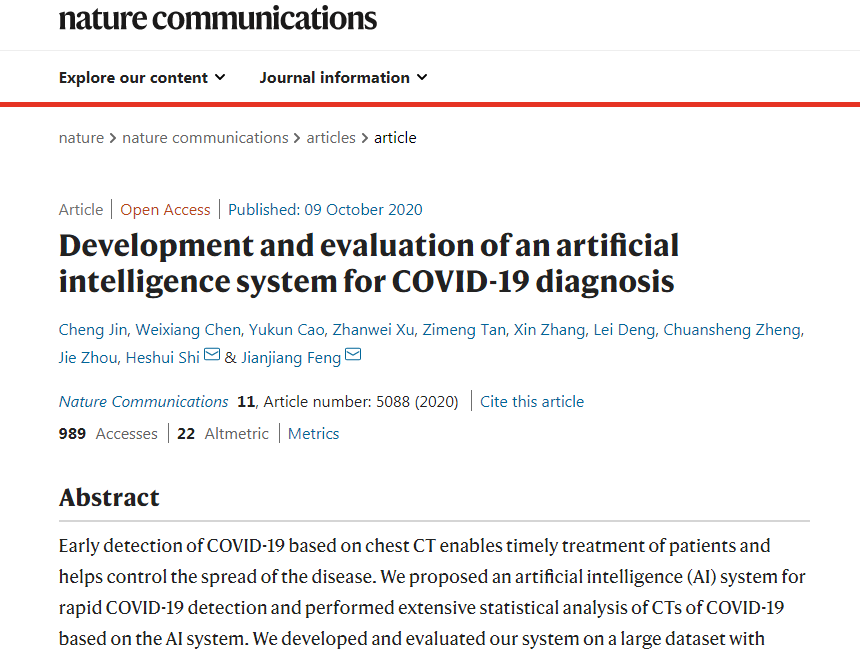Chinese researchers have developed an artificial intelligence (AI) system that can help doctors discriminate COVID-19 from flu and other respiratory diseases in less than three seconds, according to a paper published in the journal Nature Communications earlier this month.
As the influenza season approaches and the threat of a second wave of COVID-19 growing in many countries, differentiating between the two respiratory illnesses, which share similar symptoms, becomes critical to contain the pandemic.
Researchers from Tsinghua University and Wuhan-based Union Hospital, affiliated with the Huazhong University of Science and Technology, developed the AI system using a large dataset with more than 11,000 CT volumes from COVID-19, influenza, non-viral community-acquired pneumonia, and non-pneumonia.
It can efficiently tell apart theses illnesses with high accuracy by identifying the differences in patients' CT scans.

Screenshot of the paper from the website of Nature Communications
Screenshot of the paper from the website of Nature Communications
According to the paper, CT volumes of COVID-19 patients were collected mainly from February to March at three hospitals in Wuhan, once the epicenter of the COVID-19 epidemic in China.
The AI model, known as a deep convolutional neural network-based system, turned detection experiences accumulated by experts into algorithms. Test results showed that it can differentiate four respiratory diseases, including COVID-19, influenza, and non-pneumonia, with an accuracy of 97.8 percent.
Faster and more accurate
In further studies, the research team compared the diagnostic performance of this CT-based AI system with that of five radiologists, and results show that the performance of the system is greater than that of its human counterparts.
The AI model will help lessen the workload of doctors. The study shows that the average reading time of radiologists was 6.5 minutes, while that of the AI system was 2.73 seconds.
The paper says that the AI system was only slightly worse at distinguishing pneumonia from non-pneumonia than radiologists.
Using CT lung screening to differentiate COVID-19 from other pneumonia is difficult due to the high similarities of pneumonia of different types, especially in the early stage, and large variations in different stages of the same type. Therefore, developing an AI diagnosis algorithm specific to COVID-19 is necessary, said co-author Feng Jianjiang at Tsinghua University, also an expert in fingerprint recognition and computer vision.
Though doubt about using CT scans to detect COVID-19 remains, Feng believes that CT plays a vital role in severity assessment and patient management. Related applications of the AI system have been used by doctors in Wuhan hospitals.
The AI diagnosis algorithm also has the advantages of high repeatability and easy large-scale deployment, showing the potential to become a new tool to control the spread of COVID-19, according to Feng.
(With input from Xinhua.)